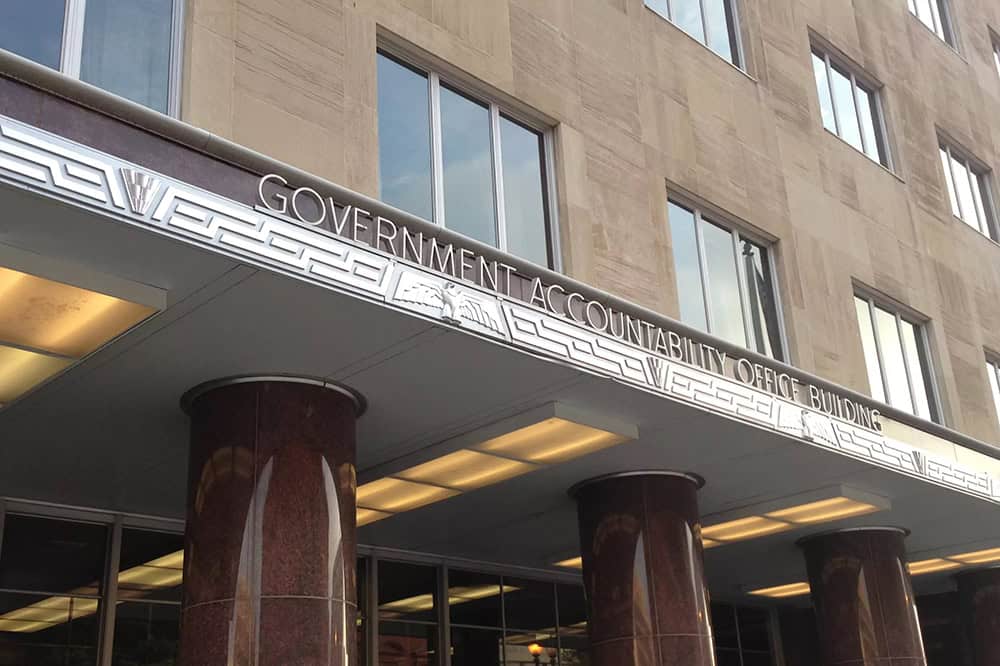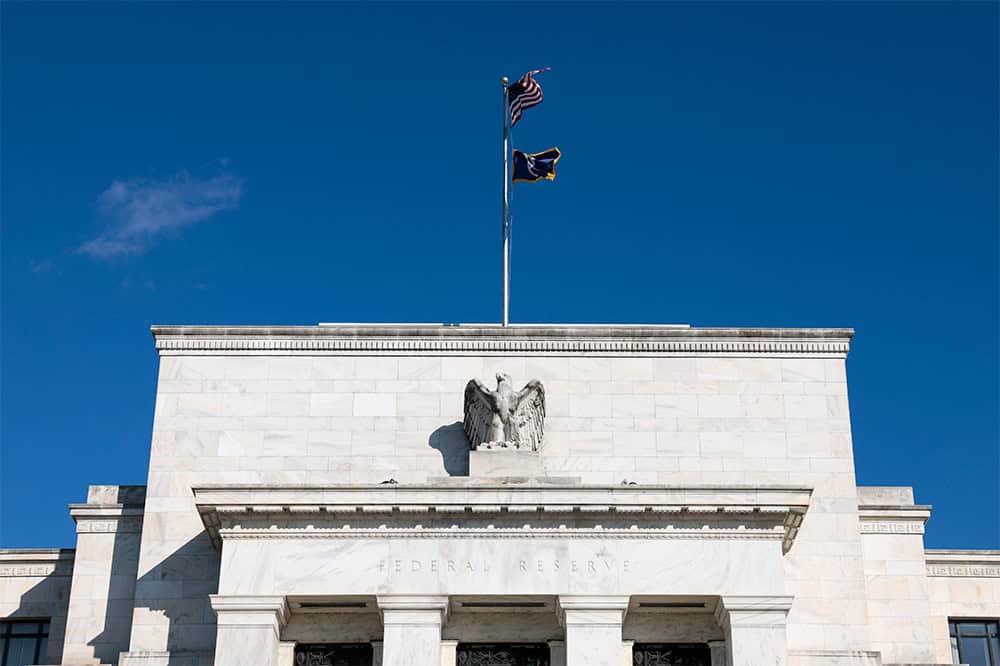With Presidential Primary Season Days Away, Majority of Voters Want Leaders to Focus on Nation’s Fiscal Future
The January 2016 Fiscal Confidence Index, Modeled after the Consumer Confidence Index, is 53 (100 is Neutral)
NEW YORK — The Peter G. Peterson Foundation’s January Fiscal Confidence Index, a monthly measure of public attitudes about the nation’s long-term debt and the efforts elected leaders are making to address America’s fiscal challenges, shows that a significant majority of Americans remain concerned about the nation’s fiscal future. The Fiscal Confidence Index, modeled after the Consumer Confidence Index, is 53 (100 is neutral), indicating voters’ desire to see candidates offer a plan to put the nation on a sustainable long-term path.
With Presidential primaries and caucuses starting next month, voters widely agree that the debt should be among the top three priorities for the President and Congress (78% agree/18% disagree, including 54% who agree strongly). This sentiment extends across party lines, as clear majorities of the Democratic (70% agree) and Republican (89% agree) voters rate it as a top priority. Overall, 65% of voters say their concern about the national debt has increased in recent years.
“As voting and caucusing begins in the 2016 election, Americans understand that getting our fiscal house in order is essential to securing a more prosperous economic future,” said Michael A. Peterson, President and CEO of the Peter G. Peterson Foundation. “This election season, voters expect their candidates to put forward a plan to address these long-term challenges, and put the nation on a sustainable fiscal path.”
The Fiscal Confidence Index measures public opinion about the national debt by asking six questions in three key areas:
- CONCERN: Level of concern and views about the direction of the national debt.
- PRIORITY: How high a priority addressing the debt should be for elected leaders.
- EXPECTATIONS: Expectations about whether the debt situation will get better or worse in the next few years.
The survey results from these three areas are weighted equally and averaged to produce the Fiscal Confidence Index value. The Fiscal Confidence Index, like the Consumer Confidence Index, is indexed on a scale of 0 to 200, with a neutral midpoint of 100. A reading above 100 indicates positive sentiment. A reading below 100 indicates negative sentiment.
Fiscal Confidence Index Key Data Points:
- The January 2016 Fiscal Confidence Index value is 53. A score of 100 is neutral. Values below 100 show negative sentiment, while values above 100 show positive sentiment. (December’s value was 51. November’s value was 47.)
- The current Fiscal Confidence Index score for CONCERN about the debt is 46, indicating deep concern about the debt. The score for debt as a PRIORITY that leaders must address is 25 indicating that Americans want elected leaders to make addressing long-term debt a high priority. The score for EXPECTATIONS about progress on the debt is 89, indicating strong pessimism about the direction of long-term fiscal policy in the next few years. The Fiscal Confidence Index of 53 is the average of these three sub-category scores.
- For a description of the complete methodology, see the Appendix below.
The Peter G. Peterson Foundation commissioned a poll by the Global Strategy Group and North Star Opinion Research to survey public opinion on the national debt. The nationwide poll included 1,007 U.S. registered voters, surveyed by telephone between January 18 and January 21, 2016. The poll has a margin of error of +/- 3.1%. The poll examined voters’ opinions on the national debt, political leadership, and America’s fiscal and economic health.
Detailed poll results can be found online at: www.pgpf.org/FiscalConfidenceIndex
About the Peter G. Peterson Foundation
The Peter G. Peterson Foundation is a nonprofit, nonpartisan organization that is dedicated to increasing public awareness of the nature and urgency of key fiscal challenges threatening America’s future, and to accelerating action on them. To address these challenges successfully, we work to bring Americans together to find and implement sensible, long-term solutions that transcend age, party lines and ideological divides in order to achieve real results. To learn more, please visit www.pgpf.org.
APPENDIX: Fiscal Confidence Index Methodology and Questions
- The Fiscal Confidence Index is released monthly by the Peter G. Peterson Foundation.
- The Fiscal Confidence Index value is based on six questions in three categories.
- As is done with the Consumer Confidence Index, the first step in calculating the Fiscal Confidence Index is determining the “Relative Value” for each question. This calculation is made by taking the positive response for each question and dividing it by the sum of the positive and negative responses. Each question was asked on a four-point scale, and answers were weighted according to intensity, with the strongest responses counting twice as much as the middle responses (“much” better or worse answers count twice as heavily as “somewhat” better or worse answers).
- The scores for the Concern, Priority, and Expectations categories are determined by averaging the scores derived from the two questions in each category.
- The Fiscal Confidence Index value is converted from the Relative Value to place it on a scale on which 100 indicates equal positive and negative sentiment, while values below 100 indicate negative sentiment and values above 100 indicate positive sentiment.
- The Peter G. Peterson Foundation commissioned the poll by the Global Strategy Group and North Star Opinion Research to survey public opinion on the national debt. The nationwide poll included 1,007 U.S. registered voters, surveyed by telephone between January 18 and January 21, 2016. The poll has a margin of error of +/- 3.1%. The poll examined voters’ opinions on the national debt, political leadership, and America’s fiscal and economic health.
- The questions are as follows:
| CONCERN (46) | |||
|---|---|---|---|
| Thinking about our national debt over the last few years, would you say your level of concern has increased or decreased? ◊ Is that a lot or just a little? |
Jan 2016 | Dec 2015 | Nov 2015 |
| Increased a lot | 46% | 43% | 44% |
| Increased a little | 19% | 22% | 22% |
| Decreased a little | 10% | 11% | 10% |
| Decreased a lot | 7% | 6% | 5% |
| (No change) | 17% | 16% | 17% |
| (Don’t Know/Refused) | 1% | 2% | 2% |
| INCREASED (NET) | 65% | 65% | 66% |
| DECREASED (NET) | 17% | 17% | 15% |
| When it comes to addressing our national debt, would you say things in the United States are heading in the right direction or do you think things are off on the wrong track? ◊ Do you feel that way strongly or just somewhat? |
Jan 2016 | Dec 2015 | Nov 2015 |
| Right direction-Strongly | 12% | 9% | 10% |
| Right direction-Somewhat | 17% | 18% | 16% |
| Wrong track-Somewhat | 14% | 16% | 17% |
| Wrong track-Strongly | 44% | 44% | 44% |
| (Neither/Mixed) | 7% | 9% | 7% |
| (Don’t Know/Refused) | 6% | 5% | 6% |
| RIGHT DIRECTION (NET) | 29% | 26% | 26% |
| WRONG TRACK (NET) | 58% | 60% | 62% |
| PRIORITY (25) | |||
|---|---|---|---|
| Some people say that addressing the national debt should be among the President and Congress’ top 3 priorities. Do you agree or disagree? ◊ Do you feel that way strongly or just somewhat? |
Jan 2016 | Dec 2015 | Nov 2015 |
| Strongly agree | 54% | 54% | 56% |
| Somewhat agree | 24% | 24% | 21% |
| Somewhat disagree | 10% | 12% | 11% |
| Strongly disagree | 8% | 7% | 7% |
| (Don’t Know/Refused) | 4% | 3% | 5% |
| AGREE (NET) | 78% | 78% | 77% |
| DISAGREE (NET) | 18% | 19% | 18% |
| And when it comes to our national debt, do you think it is an issue that the President and Congress should spend more time addressing or less time addressing? ◊ Would you say a lot (more or less) time or just a little? |
Jan 2016 | Dec 2015 | Nov 2015 |
| A lot more time | 57% | 58% | 57% |
| A little more time | 22% | 23% | 24% |
| A little less time | 6% | 6% | 6% |
| A lot less time | 3% | 3% | 4% |
| (The same amount of time) | 7% | 6% | 4% |
| (Don’t Know/Refused) | 4% | 5% | 4% |
| MORE TIME (NET) | 80% | 80% | 81% |
| LESS TIME (NET) | 9% | 9% | 10% |
| EXPECTATIONS (89) | |||
|---|---|---|---|
| And thinking about our national debt over the next few years, do you expect the problem to get better or worse? ◊ Is that much (better or worse) or just somewhat (better or worse)? |
Jan 2016 | Dec 2015 | Nov 2015 |
| Much better | 9% | 8% | 7% |
| Somewhat better | 19% | 20% | 17% |
| Somewhat worse | 26% | 26% | 30% |
| Much worse | 26% | 26% | 29% |
| (No change) | 7% | 7% | 5% |
| (Don’t know/Refused) | 13% | 13% | 11% |
| BETTER (NET) | 28% | 28% | 25% |
| WORSE (NET) | 52% | 52% | 59% |
| And when it comes to our national debt, are you optimistic or pessimistic that the United States will be able to make progress on our national debt over the next few years? ◊ Would you say you are very (optimistic or pessimistic) or just somewhat? |
Jan 2016 | Dec 2015 | Nov 2015 |
| Very optimistic | 21% | 17% | 16% |
| Somewhat optimistic | 32% | 36% | 31% |
| Somewhat pessimistic | 17% | 17% | 21% |
| Very pessimistic | 19% | 21% | 22% |
| (Neither/Mixed) | 6% | 5% | 6% |
| (Don’t Know/Refused) | 5% | 4% | 4% |
| OPTIMISTIC (NET) | 52% | 53% | 47% |
| PESSIMISTIC (NET) | 36% | 38% | 43% |
Further Reading
How Much Can the Administration Really Save by Cutting Down on Improper Payments?
Cutting down on improper payments could increase program efficiency, bolster Americans’ confidence in their government, and safeguard taxpayer dollars.
What Is R Versus G and Why Does It Matter for the National Debt?
The combination of higher debt levels and elevated interest rates have increased the cost of federal borrowing, prompting economists to consider the sustainability of our fiscal trajectory.
High Interest Rates Left Their Mark on the Budget
When rates increase, borrowing costs rise; unfortunately, for the fiscal bottom line, that dynamic has been playing out over the past few years.


